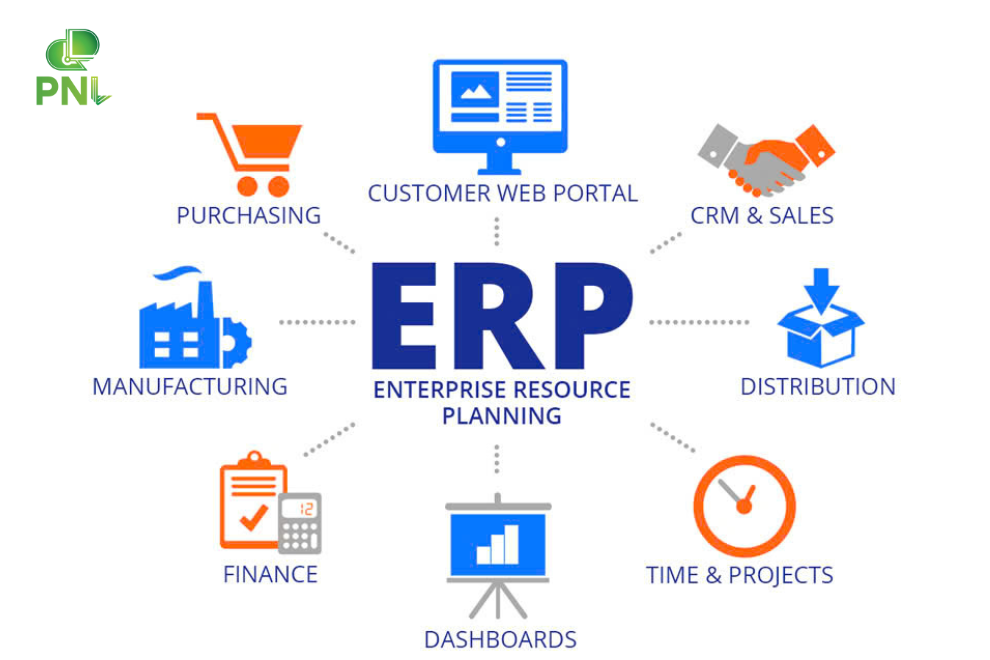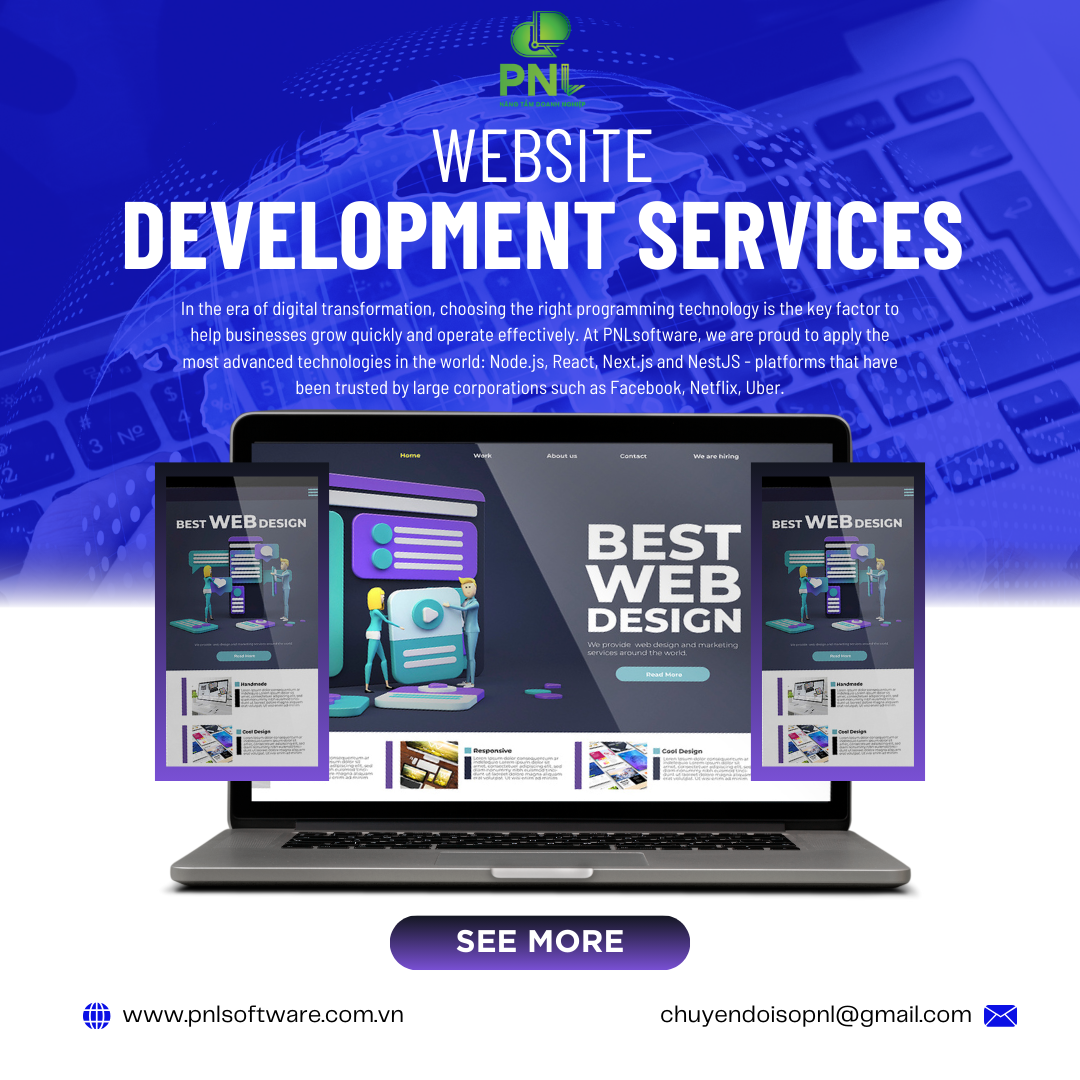A Guide to Choosing the Right ERP Software for Your Business
In an increasingly competitive market, selecting the right ERP (Enterprise Resource Planning) software is a key factor in optimizing business processes, improving efficiency, and managing data effectively. However, with numerous ERP solutions available, how can your business find the perfect match?PNL Software
Join as we explore the detailed steps to choosing the best ERP software for your needs in this article.
What is ERP, and Why Does Your Business Need It?
ERP is an integrated software system that helps manage and synchronize critical business operations such as finance, human resources, production, and supply chain management. A well-implemented ERP system not only minimizes waste but also provides a comprehensive view of operations, allowing businesses to make strategic decisions more accurately.
For example, with ERP, you can:
- Automate production planning processes.
- Track cash flow and expenses in real time.
- Enhance collaboration between departments.
So, how do you choose the right ERP software? Let’s explore the key factors to consider.

1. Define Your Specific Business Needs
Every business has unique characteristics based on its industry, size, and operational processes. Before selecting an ERP system, ask yourself:
- What industry does your business belong to? (Manufacturing, retail, services, etc.)
- What is the size of your company? (Small, medium, or large?)
- What problems do you want to solve? (Inventory management, finance, HR?)
For example, a manufacturing company may require a robust production management module, while a retail business might prioritize inventory and sales tracking features.
2. Features and Functionality
List the must-have features your ERP system should include, such as:
- Financial Management: Track cash flow, generate financial reports
- Inventory Management: Monitor stock levels and optimize supply chain operations.
- Human Resource Management: Automate payroll and employee records.
Choose an ERP solution with modules that meet current needs while allowing for future expansion.
3. Integration Capabilities
ERP software should seamlessly integrate with your existing systems, such as:
- Accounting software, CRM systems, or e-commerce platforms.
- API support for easy data exchange and workflow automation.
Before making a decision, ensure that the ERP system supports easy integration with your business tools.
4. Ease of Use and Training
A user-friendly interface ensures that employees can quickly adapt to the system. Consider:
- How long will training take for employees?
- Does the vendor provide user manuals or training support?
A well-structured onboarding process minimizes down time and improves adoption rates.
5. Vendor Support and Maintenance
Reliable vendor support is crucial for smooth ERP operations. Check for:
- 24/7 technical support availability.
- Policies on software maintenance and upgrades.
Choose a vendor that offers ongoing support and regular updates to ensure long-term efficiency.
6. Cost Considerations
ERP implementation involves multiple costs beyond the initial purchase price, including:
- Training costs: Employee onboarding and system adoption.
- Annual maintenance fees: Software updates and security patches.
- Implementation and integration costs: Customization and data migration.
Instead of focusing solely on the cheapest option, consider the long-term value and return on investment (ROI) the ERP system will bring.
How to Evaluate and Compare ERP Solutions
Once you have defined your needs, the next step is to evaluate potential ERP solutions. Follow these steps:
1. Create a List of ERP Vendors
Research the market and create a list of reputable ERP providers. Some well-known ERP solutions include SAP, Oracle, and PNL Software, which offers custom ERP solutions tailored for Vietnamese businesses.
2. Request a Demo and Trial
Ask vendors for a live demo or trial version to experience the software firsthand. This will help you evaluate:
- Do the features align with your needs?
- Is the interface intuitive and easy to use?
3. Get Feedback from Existing Users
Reach out to businesses currently using the ERP system to ask about:
- Real-world system performance.
- Quality of vendor support and services.
Effective ERP Implementation and Management
Choosing the right ERP software is just the first step. Successful implementation and management are equally important.
1. Plan the Implementation Process
- Define a realistic timeline (usually a few months to a year, depending on business size).
- Allocate resources (personnel, budget, and IT support).
2. Train Your Employees
Organize training sessions to ensure employees understand and use the ERP system effectively. PNL Software offers specialized training and support during this phase.
3. Monitor and Evaluate Performance
After implementation, set up KPIs (Key Performance Indicators) to measure success, such as:
- Reduction in order processing time.
- Increase in production efficiency.
Conclusion: Making the Right ERP Investment
Choosing the right ERP system is not just about buying software—it’s about investing in long-term business growth and efficiency. By carefully assessing your needs, comparing solutions, and implementing ERP effectively, your business can streamline operations and gain a competitive edge.
Still unsure? Contact PNL Software today for a free consultation and experience an ERP demo tailored for Vietnamese businesses.
Contact PNL Software for the Best ERP Solution for Your Business!
📞 Hotline: 0932702486
🌍 Website:www.pnlsoftware.com
📧 Zalo OA:https://zalo.me/chuyendoisopnl
📧 Email:chuyendoiso.pnl@gmail.com
🔥 Transform Your Business with PNL Software Today! 🔥











